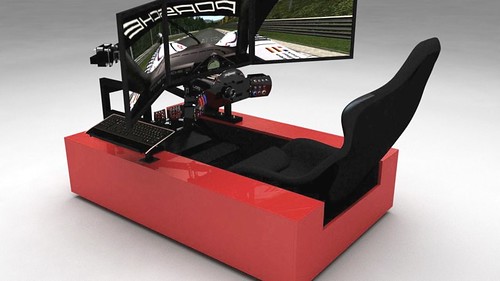Building a Driving Simulator – Part 3 (Gregg Langnese)
Some of you might remember the very interesting “Building a Driving Simulator” video series by Gregg Langnese.
Back in 2011, Gregg Langnese started to build a sim racing cockpit based on the design needed to fit drivers from less than 4′ tall to drivers over 6′ tall. The concept designs were constructed with Autodesk 3ds Max and Autodesk Inventor was used to produce the detailed blueprints for the actual build.
The total build time for the original rig was approximately 12 weeks. It took Gregg around 100 hours to finish the first design. Total material cost, including the seat and electronics, was approximately $800. Over the years, the sim racing cockpit project has been evolving and has received a number of updates.
Now Gregg published his third video documenting the ongoing DIY Simulator Sled build. Part three is divided into two sections covering the steering rack, keyboard tray, seat, amp, and bass shakers.
For those who have missed the previously released videos, here is the list.
- Expansion of a Driving Simulator [by Gregg Lagnese]
- Part One – Building a Driving Simulator (Gregg Langnese)
- Part Two – Building a Driving Simulator (Gregg Langnese)
If you want to have a look at the history of Gregg’s build, make sure to check out his sim racing cockpit blog.
Gregg Langnese Driving Simulator Specifications:
- Height 46″
- Length: 65″
- Width: 60″ (assuming 45 degree monitor rake)
- Weight: 190 lbs. (without monitors)
- Seat travel: 10″ fore and aft, 20-degree tilt in 5-degree increments
- Pedal travel: 12″ fore and aft, 0-30 degree tilt in 5-degree increments (from 10-30 degrees)
- Steering travel: 16″ fore and aft, up to 12″ up and down, 30-degree wheel pitch, 30-degree steering shaft pitch
- Monitor travel: 8″ up and down from center point
- Accommodates up to three 30″ monitors, individual monitor pitch 180 degree, yaw 60 degrees.
| Check out lagnese.me – SRH Dash info at simracinghardware.com |
 Bsimracing Sim Racing Resources and News for the racing enthousiast.
Bsimracing Sim Racing Resources and News for the racing enthousiast.








